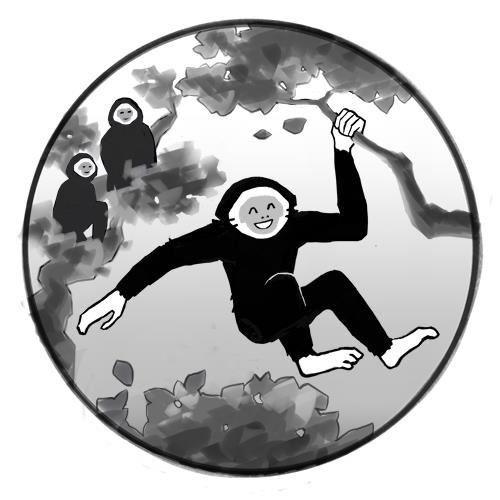Udayana’s Concept of the Self and Arguments for its Existence and Persistence
Agnieszka Rostalska, Ghent University
Viewing the comments
To view cross-cultural perspectives on this essay by 9 scholars, please create a Hypothesis account and add Hypothesis to your Chrome browser. (Hypothesis layers comments over any text on the web!) You can then choose to see everyone’s comments, or single out those of a specific scholar.
- Activate the Hypothesis plugin using the icon in the upper-right corner of your Chrome tab. Then log into your hypothesis account.
- Click on the “ < “ symbol in the upper-right corner of your Chrome tab to open the Hypothesis menu.
- Click on the “ v “ beside the word “public” to drop down a menu, from which you can select “GCPR conceptions of self.”
Introduction
This essay constitutes an introduction to the concept of the self and arguments for its existence and persistence offered by the 10th-century, Indian philosopher Udayana. Theoretically and methodologically, it aims to develop cross-cultural philosophical inquiry into the concept of the “self”, and related issues of its existence and persistence. The proposal breaks with the orientalist, epistemic problematics of the “East-West” dichotomy by focusing on “persistence,” and, by orienting the ‘public debate’ around an exposition of the relatively unknown philosophical views of the 10th-century South Asian philosopher Udayana (rather than, say, a “Western European” figure or school). Further, it will undergo online annotations, which will serve as an impulse for a public discussion between engaged group of scholars specializing in less-commonly taught philosophies. As a consequence, the views of Udayana on the “self” will serve as a starting point for a cross-cultural counterfactual thought-experiment engaging diverse global philosophical traditions.
Cross-cultural counterfactual thought experiment involving UDAYANA
As result of many years of academic research I have spent directing my focus towards the so-called *Indian philosophical traditions (*Hindu, Buddhist, Jain, materialist, etc.), I have chosen the Nyāya philosophical school as a sample model of rational theological enquiry. Nyāya is one of the major darśanas or schools of philosophical thought in India, essentially concerned with epistemology and logic . The term ‘nyāya’ has etymological roots in ‘naya’, signifying the skillful art of reasoning or methods ensuring fairness in argumentation and legitimate tactics. The figure of Udayana is in this context meaningful, as he is considered a “father” of the theistic refinements of this tradition –notably the author of two independent manuals: 1. Nyāyakusumāñjali (An Offering of Flowers), dedicated to the arguments for the existence of *God/Īśvara, and 2. Ātmatattvaviveka, or: Investigation of the Reality of the Self, developing arguments for the existence of the self (ātman), which is the main text of this study.
I identify Udayana among the key innovative philosophical thinkers coming from India. His scholarship dedicated to novel ideas of Self and *God is backed up by sharp arguments developed to defend these notions. In my view, Udayana’s works are worth recognizing for study by philosophers of religion. The text of the Ātmatattvaviveka (later for short: ATV) is overlooked even by more narrow field specialists. Most scholars dedicated to the exposition of the Nyāya concept of Self refer to the sūtras and their commentaries (e.g. Chandha 2013). There are yet to be studies of how Udayana’s independent and novel treatise engages with other traditions of Indian philosophy. Notable interpretations of Udayana’s works were done by Bimal Krishna Matilal (1994), Arindam Chakrabarti (1982), and Chakravarti Ram-Prasad (2001, 2017). Kisor Kumar Chakrabarti (1999) did a partial translation of this work and some commentary on it in his book Classical Indian Philosophy of Mind: The Nyāya Dualist Tradition. Udayana is an example of how cosmopolitan, comparativist philosophers of religion may critically engage with others without defending any religious sect per se. I hope that a debate on this text will invite the participants into dialogue, which makes theoretical pursuits in philosophy of religions a truly global, comparative, and inclusive endeavor.
Introducing Udayana
The philosophical ideas of a particular thinker are always inseparable from their socio-cultural and historical milieu. Who was Udayana? Which intellectual environment inspired his philosophical endeavors?
Udayana was born in a Hindu Brahmin family and lived in ca. 11th century. in Mithilā (near Dharbhaṅgā in today’s state of Bihar, India. Amma, 1985: 3). His scholastic commentary Nyāya–vārttika–tātparya–ṭīkā–pariṣuddhi (“Correctness of the Notes on the Meaning of the Gloss on the Commentary on Nyāya”) – also known as Pariṣuddhi or Nibandha – on Vācaspati Miśra’s Nyāyavārttikatātparyaṭīkā suggest that he belonged to the lineage of early Nyāya (or prācīna Nyāya) tradition. As such, this text is a final voice in a series of the earliest or classical commentaries of the Nyāyasūtras of Gautama. (later for short: NS), the primary treatise of the Nyāya tradition.
Udayana was also an innovator of the Nyāya tradition, as he is the one who synthesized the tradition of Nyāya with its ‘sister–school’ Vaiśeṣika,. which gives a syncretic aspects to his texts. Some scholars credit him as the pioneer of a new Nyāya (or Nāvya-Nyāya) tradition, due to his intricate writing style and use of technical terminology.
Udayana’s works are as deeply engaged with competing schools of thought as with peers in the Nyāya tradition, such as Bhāsarvajña (ca. 860–920). Perhaps for this reason, Udayana’s works are regularly commented upon as an authority by later Indian thinkers and present-day Naiyāyika philosophers. Some contemporary interpreters (i.e., Matilal 1977: 97) compare his mastery of logical argumentation with regards to existence of “God” and “soul” with that of Italian Dominican Thomas Aquinas (13th century). Udayana’s scholastic style, which predates that of Aquinas, first presents objections (pūrvapakṣa) of the opponent (real or imaginary, at times reformulating standpoints so that they appear even stronger), confronts the objections (uttara-pakṣa), and then endorses his own views.
Udayana engaged in both intellectual debates through his writings, and through debates in public (vāda). A story about his life reveals that when Udayana won in a public debate with the Advaita dialectician Śrīhīra. His son Śrīharṣa composed the text Khaṇḍanakhaṇḍakhādya (“The Sweets of Refutation”) to avenge his father’s defeat and public humiliation (Bhattacharyya 2010: 298). An example of Udayana’s intellectual debating is his Nyāyakusumāñjali, which engaged atheistic Indian materialists (Cārvāka), Sāṃkhya and Mīmāṃsā philosophers, as well as Jain and Buddhist thinkers. His Ātmatattvaviveka, or the Investigation of the Reality of the Self also known as Bauddhādhikkāra (Reproach to the Buddhists), is meant to oppose four Buddhist schools, mainly: Sautrāntika, Vaibhāṣika, Yogācāra, and Mādhyamika, as well as early Advaita Vedāntins, and Materialists, among others. Overall, Udayana’s focus in these debates is directed towards the Buddhist philosopher Jñānaśrīmitra,. a follower of Dharmakīrti’s school. Thus, I think it is very appropriate to have Udayana’s works as the focus of a contemporary public debate among a wide variety of philosophical perspectives.
According to some contemporary scholars, Udayana has “demolished in final fashion the claims of the Buddhist logicians” (Bhattacharyya 2010: 298).” Tachikawa writes that Udayana, “made the greatest contribution to driving the Buddhists out of India (…) He may be said to have brought the conflict between the Buddhist logicians and Hindu logicians to an end (…) Indian Mahāyāna Buddhism was subsequently unable to produce any scholar capable of refuting Udayana” (Tachikawa 1981: 8). A more moderate version of these claims is to recognize how Udayana’s personage may be identified to provide scholars today with important evidence about the contents and history of Indian philosophy.
The context for the Ātmatattvaviveka
For the purposes of this essay, I wish to focus on Udayana’s unique texts on the existence of Self (ATV). In terms of intellectual debate, the text’s objective is to refute the Materialists and Buddhists theories of emergent self (materialism), and no-self and momentariness (Buddhism). The Materialists of Udayana’s time argued that cognitions are qualities of the bodily organs, and that consciousness arises out of the bodily processes and is born when the body matures and dies when the body dies. Most Buddhists from the 11th century argued that cognitions are only causally connected in a stream of awareness events, but do not reside in a substance called the self. For them, cognitions are not qualities, but are produced by an association of bodily sense organs with preceding karmic dispositions. I am taking a departure from dwelling upon these polemical aspects of Udayana’s thought. There are, of course, other ways to read the ATV. The primary aim of this essay is to foreground the conception of “self” proposed by Udayana, and then make some remarks on his conception of “persistence.”
It is useful to pause at this point to highlight Udayana’s method of approaching different philosophical perspectives. Udayana’s arguments constitute a fascinating polemics with other schools of thought; here, Udayana scholastically presents the opposing views – the doctrines opposed to the Nyāya’s concept of the Self – to refute the rivals and establish his own innovative interpretation of the traditional Nyāya postulations. He presents four distinct counterarguments which correspond to the views held by his opponents: 1. Momentariness theory [Buddhist, mainly Sautrāntika] 2. Unreality of external objects, consciousness alone is real [Yogācāra Buddhist, “idealist”], 3. Non-difference between a quality and a qualified/quality-possessor (or quality’ and ‘substance’) [Buddhist and Advaita Vedāntin], 4. Non-perception (anupalambha) or non-experience of the self different from the body [Buddhist and Materialist]. (Bhattacharyya, 2010: 300, Amma, 1985 :13). According to Udayana, “There are (these) views opposed to the reality of self, namely, that everything is of momentary duration, that there is nothing real apart from consciousness, that qualities and things endowed with them do not differ from each other and that the (so called) self is never perceived (or observed)” [ATV 20, Dravid ed. p. 5]. Before introducing Udayana’s arguments in more detail, it will be useful to first define the related concepts which were brought out in their original context.
Nyāya’s rational ātma-logy – conceptualization
The term for “self” across the Indian philosophical traditions engaged with by Udayana is “ātman.” The concept of ātman has a long history on the Indian subcontinent, which is attested by the Upaniṣadic (Upaniṣads, composed ca. 800–400 BCE) principal concern with the knowledge of the Self (ātman). Here, the term ātman, generally signifies the immutable, undifferentiated, unconditioned, and autonomous principle of existence in human beings). Liberation from rebirth (mokṣa) pertains to realization, or direct perception of the Self, ātman.
The issue of how the concept of the ‘self’ is defined in the Nyāya tradition is directly linked to another question prevailing across all competing traditions in India, mainly: can the existence of ‘self’ be known through the means of knowledge (pramāṇas), such as perception, inferential reasoning, testimony? Moreover, if, and how is the state of ‘liberated consciousness’ desirable by the self? Is it a happy or blissful state? These are the kinds of questions that guided the public and intellectual debates of Udayana and his peers.
To approach Udayana’s conception of the self, first, I will briefly outline the standard Nyāya views on ‘self’, which were the object of critique by and debate with mainly Materialist and Buddhists opponents. Their critiques predominantly motivated Udayana’s response in the ATV. Udayana supposes his readers prior knowledge of the concept of the self and the main Nyāya arguments for its existence and persistence, for convenience, I will briefly introduce them in the next paragraph. Afterwards I am going to turn to Udayana’s emphases and modifications. This will lead to examining Udayana’s endorsement of the existence of permanent self (against the Buddhist ‘no-self’ theory and ‘emergentism’).
Nyāya tradition admits the existence of infinitely many selves/souls (ātman), which are eternal, immaterial and non-composite substances with characteristic qualities (e.g. cognition, pleasure, pain, or desire). The selves are singular and different in all organisms. They experience when associated with ‘body vehicles’ composed of homogeneous atoms of a particular material substance. Their connection with a living body consciousness emerges not as a necessary but as an accidental feature. Before the connection with the mind (manas), an individual self is not conscious. In other words, the self must be embodied in order to experience awareness and cognitions (NS 3.1.18–26).
The Nyāya tradition may be briefly summarize to attribute three main characteristics of the self:
First, the self is different from the mind and the senses, which enables it to realize its own activity. However, the instance of mind is here not an active or cognitive faculty but solely a passive internal organ, which neither thinks nor acts. It serves as an instrument for the self to experience (pleasure, pain, desire, aversion, merit, demerit, etc.) and cognise. Cognition is here a property of the self, since the self is a locus of awareness, and not a cluster of physical elements or non-sentient intermediaries. The self owns its qualities: cognitions, dispositions, memories, feelings, and actions. The self is therefore not pure consciousness, as Materialists or Idealists would claim, but is a highly individuated self with a personality.
Second, the self is the substratum of knowing (jñānādhikaraṇam-ātmā). Self is not conscious by nature, it is an inherent cause of consciousness or knowledge. Knowledge is an adventitious attribute of the self. Through the connection with a living body consciousness emerges, but not as necessary but as an accidental feature.
Third, because the self is a continuous spiritual substance, it retains its identity through the events of one lifetime and from one lifetime to another. Moreover, the Nyāya thinkers would argue that the self endures beyond death. Their argument is as follows: “Because, immediately being born, an infant has the experience of joy, fear and sorrow [and this] as a result of the ‘lingering of the memory’ (smṛti–anubandha) of the past experiences” (Gangopadhyaya transl. vol. 3, 1972: 33). The commentator Pakṣilasvāmin Vātsyāyana in the Nyāya-bhāṣya (later for short: NBh) explains that the recollection of one’s past experiences produces the experiences which are indicated by emotions. The underlying assumption here is that of rebirth, since how does the newborn know how to emotionally respond? Or, why does a newborn immediately try to reach out to the mother’s chest for nourishment? According to this tradition, the answer is that these reactions are linked to memories. They are the result of previous experiences. The continuity of self stretches into the past, and consequently is projected into the future. This gives the self two fundamental forms of identity, i.e., the identity of knowing: one and the same self apprehends cognitions. And, the identity of action: one self inherits karmic fruits of action and suffers or enjoys them.
The Nyāya tradition considered the existence of self as a given long before Udayana’s involvement in their debates. The self is enlisted in the NS 1.1.9 as one of the objects of knowledge, prameyas. It is discussed in that text as the topic of inquiry, as something yet to be determined. The Naiyāyikas do not support this conclusion first and foremost on the basis of testimony of sacred text, like the Vedas, nor to the reliable utterance of some source provided by an authoritative speaker (for instance a sage (ṛṣi) or another noble person). They leave space for a possibility of learning about the ‘self’ through testimony. Among all accepted means of knowledge, the self’s (ātman) existence is postulated with the use of inferential proofs, i.e. through the process of inference (anumāna). The self cannot be perceived directly. What this means is that the self is something known based on experienced inner states . The following sūtra states that the self (ātman) is an object of inference based on ‘marks’: desire, aversion, effort, pleasure, pain, and knowledge (NS 1.1.10). Udayana’s broader intellectual context therefore included a predilection to conceptualize “self” as physically imperceptible that is only known by its inferential marks.
Perhaps the above makes it all the more remarkable that the Nyāya tradition insists that a clear understanding of the true nature of the self is a condition for final liberation (mokṣa). According to Nyāya, mokṣa, or liberation from rebirth, or apavarga, the final liberation or beatitude, is the soteriological aim of all philosophical endeavors. In the emancipated state the self is disembodied, and retains only its formal qualities (like oneness, separateness from other selves, etc.). Freedom from pain, or suffering (duḥkha), is brought about through the removal of all blemishes (attitudes and inclinations) and termination of activity. The self is released from the cycle of rebirth, yet it does not endure in the state of bliss, or eternal happiness (Chakrabarti 1983: 174–5) and persists without further cognitive states (Ram-Prasad 2001: 85–91).
Udayana’s writings do not fundamentally challenge the positions above. Instead, Udayana’s writings can be seen to bolster these claims, with arguments about how ‘self’ (ātman) is directly apprehended through internal perception. His innovation, in the ATV, is that the self can indeed be an object of direct cognition.
Udayana’s ‘self-awareness’ of the self
Amid the debates with the Materialists and the Buddhists of the time, Udayana’s objective is to remove the grounds by which these intellectual peers were able to redirect the conventional Nyāya arguments in service of their own positions. In the case of the Buddhist philosophers, the Nyāya claim that the existence of permanent self (ātman), i.e. a quality–possessor, may be inferred, was turned into an argument for no-self/anātman.
It seems that Udayana was not convinced by the dismissal provided by the Vaiśeṣika philosophers, who argued that the self’s non-perception is no evidence for the self’s non-existence, since this non-perception is due to the self’s subtlety (saukṣmya). Udayana also observed that “[t]he self is not regarded by the Buddhist as cognizable or perceptible” [ATM Dravid ed. p. 343] . To only double down on imperceptibility, as did the Vaiśeṣika, was simply not adequate. Following Vācaspati Miśra’s interpretation of the possibility of knowing the self – through perception, he considers an argument [ATM, ibid.] about the non-apprehension of the self, which K. K. Chakrabarti (1999: 268) paraphrases formally as:
Whatever is not cognized is nonexistent.
The self is not cognized.
Therefore, the self is nonexistent.
Udayana considers two cases of non-apprehension: either that the self is not apprehended by anyone (universally) or by the individual (particular). The first scenario is in his opinion questionable, as there is a possibility that the self is perceived by some or all. In other words, non-apprehension may provide a basis for doubt, but it does not disprove the existence of the self. In the second case, the individual’s non-apprehension “applies even to cognisable entities”, which also does not disprove the existence of self and its possibility of being perceived.
Udayana’s objective was to determine how the self might be known despite granting that it cannot be experienced empirically. Unless a thing is perceived, it cannot be called perceptible. So if the self is perceptible, it cannot remain unperceived. But how might the self be perceived? Udayana’s first innovation was to make an argument for indeterminate perception:
“But what is the proof for the existence of the self? Perception itself for sure. The awareness as ‘I’ is a matter of experience for all living beings. Certainly this awareness cannot be unobjective or endowed with dubious objectivity as it is neither verbal nor subject to contradiction. It is also not generated by the middle term in an inference. Even a person who has no knowledge of any middle term has self-knowledge. Nor is it recollection as what is not experienced cannot be recollected. It is also not reasonable to say that this awareness is an objectless cognition which is beginningless and is generated by a beginningless urge. This can be said of the common cognitions of blue, yellow etc. also. If self-awareness could be discredited on the ground that it is the product of some beginningless urge, how can any other cognition be credited as valid so that one could depend upon the cognitions of blue, yellow etc.?” [ATV, ibid., p. 344]
This paragraph represents his major argument for the existence of the self. Udayana points here that the indeterminate self-awareness, common to all living beings, is: non-verbal, incorrigible (not subjected to contradiction), not inferential, not recollection, not an objectless construction (non-objective construction, vikalpa).
Udayana introduces the idea of “indeterminate perception” in order to argue that the self is perceived much in the way that other categories of things are perceived. In Sanskrit the basis for this claim is the concept of nirvikalpaka, “in the raw,” where indeterminate perception grasps a qualifier of something prior to forming a robust conceptual deployment and organization of it and does not require a ‘mark’ since its object is perceived directly. The other manner of perception is savikalpaka, or “determinate” cognition, where something may be much more immediately produced as a concept within a verbal propositional. Something indeterminately perceived is not ineffable or inscrutable. Self-awareness simply does not require language; while ordinary cognitions are subjected to language and assessment (K. K. Chakrabarti ibid. 271).
Udayana’s argument is that living beings have an indeterminate perception about themselves. If the Buddhists admit that the objects of indeterminate perceptions are real, then they must concede that the self is such an object, too.
Udayana thereby argued that while there are erroneous perceptions of the self, that does not mean there is no self. Self is something as real as the color blue. It is not an “objectless cognition which is beginningless and is generated by a beginningless urge” (or, a subconscious impression, vāsanā which is not generated by some previous perception). In other words, if we would try to challenge the reality of self-awareness in this way, by reducing it to an object-less cognition generated by subconscious impressions, in a similar fashion we would challenge the reality of the color blue.
The general idea of indeterminate perception is not difficult to understand. Udayana’s argument invokes color as the basis of the claim. There can be a determinate perception of things that are “blue,” but Udayana’s analysis finds that a determinate perception of blue presupposes indeterminate awareness of blue. Udayana then extends that claim to the self. There is an indeterminate perception of what is “self.”
Udayana states further that: “Nor is self-cognition baseless or objectless because the self is not cognised by external senses. Even the cognition of intellect or consciousness would the be baseless or objectless. If self-consciousness is the ground of reality of intellect then in the case of the self too the evidencing ground is the mental perception of the self” [ATM, ibid. p. 346]. Dravid (ibid.) explains this passage as follows: “Just as consciousness is its own evidence so the self is evidenced by mental and not external sensation. Not only the self, even pleasure, pain etc. are known to be real only through mental sensation.”
Udayana’s objection to the Buddhist’s arguments about causation provides another insight into Udayana’s conception of the self. The Buddhist claim was that there is no self because each moment of time is the product of an entirely different set of co-determinating factors. While these factors might create the background for a succeeding state of affairs, that succeeding state’s identity is utterly different. That is, while one state of affairs – either that of a so-called individual or even that of the entire world – might succeed one after the other, the Buddhists argued there is no grounds to claim these states of affairs belong to the identical, same individual or world. Udayana explains this as the theory of momentariness, which he argues is unable to explain how empirical consciousness is continuous. He appeals here to the Nyāya inferential proof for the self from recollection: “it is the definite ascertainment of the earlier and later cognitions being caused by the same agent” [ATM p. 349]. K. K. Chakrabarti (ibid., 275) explains this argument as follows: “the support or source or object (ālambana) of I-consciousness is permanent, because it is also the object of recognition.” Udayana argues that if there is grounds to claim there is a continuity that connects moments, then there is grounds to claim there is something like a “self” that provides that continuity and identity, and bounds previous perception and latter recollection of the knowing agent. If perceptions and recollections did not belong to the same knower, then the teacher’s cognition could be remembered by a student. According to Udayana, this is absurd.
Udayana zeroes in on the Buddhist’s agreement about karma. He states that the theory of momentariness cannot sufficiently explain the law of karma (accumulation of merits and demerits), according to which it is one person who reaps the fruits of his/her activities. For a previous state is succeeded by the next state and there is a (split second) gap, between the preceding and succeeding states. Something must, according to Udayana, connect across these gaps. “It is the self with merit that by its contact with things brings about their movements (Dravid p. 375)”. Furthermore, according to Udayana, the Buddhist’s of his time were not able to explain memory. By Udayana’s account, Nyāya conceptions of causality do not run into these problems. The self is the material cause of our awareness of ourselves. It is the same self which both perceives and remembers (Bhattacharya 2010: 308).
Finally, Udayana points out that the attempts to reject the reality of the self, would pose a difficulty for one’s final release – “A non-self-aware person cannot be a redemption seeker” (ATV ibid., p. 376). Without the ‘self-awareness’ of the self, nothing can be desired or avoided, including one’s own final release or liberation.
Self’s persistence
Although there is a double reference to “after-life” through the concepts of 1. paraloka, the other or future world, or plane/realm of existence) or 2. svarga, “heaven” or temporary plane where the selves which have not yet reached the state of mokṣa, final release or liberation, the theological considerations of “afterlife” are not the focus of the Nyāya tradition within which Udayana wrote the ATV. Given the arguments about karma above, the notion of “after-life” would have to be accompanied by a conception of “pre-life”. And as we have seen in the mentioned earlier ‘newborn’s inheritance’ argument, revoked by Udayana, to ensure present recollections of past experiences, there should be a continuous self – the agent of apprehension (anubhava), dispositions (saṃskāra), and recollection (Amma (1985: 146).
The correlative terms for “persistence” such as “beginingless” (anādi), and endless (ananta) in Nyāya philosophy, suggest that “persistence” is a well–suited concept to describe Udayana’s ideas. Persistence is a term much better suited to cross-cultural thinking, too. Udayana’s conception of the self draws upon the Nyāya terminology of ātman. And, as we saw above, it does involve the concept of karmic disposition. Udayana’s decision to use the concept of karma was not merely to serve a role in his arguments against the Buddhists. Karma is related to how this idea of self persists.
There is much literature about the philosophical understandings of “karma” across the various schools and thinkers of Indian philosophy. From Udayana’s perspective the persistence of a self provides the grounds for discussions about karma. While his position is that while the conceptual understanding of karma depends on the self, the conception of the self does not depend solely upon karma. Instead, karma is among those phenomena that provide justification of the self as ātman.
As noted earlier, Udayana conceives of the self within the Nyāya tradition as a continuous, spiritual substance. On the grounds that newborns do not learn joy, for example, they must retain this as a lingering memory of the past experiences (see above, Gangopadhyaya transl. vol. 3, 1972: 33). These recollections of emotions indicate the persistence of the self through past experiences. But these past experiences do not destroy “free will”, since Udayana, like other Naiyāyikas, makes knowledge as that which mediates the possibility of freedom. “Why should the unconditioned self be contemplated? Because by means of continuous contemplation of it, release is attained” (ATV, ibid. p. 377). The self is capable of gaining sufficient knowledge for the release from pleasure and pain, which are the indicators of karmic retribution. Udayana asks, “what is the nature of the contemplation of self? It is discrimination. Discrimination from what? From the body, etc. which are other than the self” (ibid.) Thus, acts of cognition to discriminate the self from extraneous phenomena is the means to freely realize persistence of the self.
Udayana’s discussion of how the self can achieve the purest of ideas is based in Nyāya’s singular unifying concept – niḥśreyasa – which results from reaching a state which amounts to attaining comprehensive knowledge (tattvajñāna) of all there is to know. Niḥśreyasa, more than knowledge of the self, is an all-encompassing knowledge state. This is not the same transcendental state that is underscored in the more “spiritually” aligned theological systems – such as, in particular, mokṣa, or salvific liberation from embodied existence. Niḥśreyasa as such has no necessary connections with life hereafter (Potter 1977: 29–34). This knowledge amounts to nothing more nor less than the destruction of all mithyajñāna, false understandings. The liberating aspect of the nihśreyasa state is that no pleasures are transported across. Not even the positive pleasures of life, desire-driven satisfaction, from luxuries of appetite to sensual-sexual pleasures (Halbfass, 1997, 155–6).
The introduction of niḥśreyasa is useful to show how Udayana understands persistence of the self. The self can be released, and continue to exist independently in a joyless unending free-time seamless horizon – and steeped in deep-sleep state minus the dreams (suṣuptasya svapnādarśane, see: NS 4.1.62, M. Gangopadhyaya (transl.) part. 4, 1973: 86). In this state, the self is atemporal (nityatva) and cannot be extinguished. And there is no merging with the other, no greater or smaller of which could be thought. Udayana’s formulation of “release without transcendence” amounts to a unique model of liberation that explains the persistence of the self. The release of the self from indeterminate cognition occurs not because of any mental state succeeding it but by means of time associated with the destruction of the self’s destiny.
Conclusions
In this essay, I identified Udayana as one among the key innovative philosophical thinkers coming from India. As a relatively overlooked source of philosophical arguments about self and persistence, I have proposed Udayana’s works to be worth recognizing for study by philosophers of religion. While the historical context of the Ātmatattvaviveka is that of debates with Materialists and Buddhists, I have shown how Udayana’s polemics may be read to present some positive formulations on his understanding of “self”, “self-awareness”, and “persistence.” Udayana’s use of “indeterminate perception” enabled his texts to conceptualize an idea of self that persists both prior and after the state of existing as a human being. The objective of this present essay is neither to analyze the philosophical merits of Udayana’s argumentation nor recommend his approach as a means of doing “global-critical philosophy of religion.” I do hope that readers might gain new understandings about how ancient texts overlooked by Western canons pertaining to the philosophy of religion may be read to propose novel conceptions of self and persistence.
Bibliography
Amma, Visweswari. 1985. Udayana and His Philosophy. Delhi: Nag Publishers.
Bhattacharya, Ramkrishna. 2011. “Ṣaḍḍarśanasamuccaya, Verses 81-84”, In: Studies on The Cārvāka/Lokāyata, pp. 182–4, London, New York, Delhi: Anthem Press.
Bhattacharyya, Sibajiban. 2010. Development of Nyāya Philosophy and its Social Context. History of Science, Philosophy and Culture in Indian Civilization. Vol. III part 3, New Delhi: Project of History of Indian Science, Philosophy, and Culture, Centre for Studies in Civilizations, pp. 297–335.
Bilimoria, Purushottama. 2016. Horizons of the Self in Hindu Thought, Delhi: D.K. Printworld, 3rd edition.
Chadha, Monima. 2013. “The Self in Early Nyāya: A Minimal Conclusion”. Asian Philosophy 23: 1, pp. 24–42.
Chakrabarti, Arindam. 1982. “Nyaya Proofs for the Existence of the Self”. Journal of Indian Philosophy 10: 3, pp. 211–238.
Chakrabarti, Arindam. 1983. “Is Liberation (mokṣa) pleasant?”. Philosophy East and West 33: 2, pp. 167–182.
Chakrabarti, Arindam. 1992. “I Touch What I Saw”. Philosophy and Phenomenological Research 52: 1, pp. 103–116.
Chakrabarti, Kisor K. 1999. Classical Indian Philosophy of Mind. The Nyāya Dualist Tradition. Albany: State University of New York Press.
Chakrabarti, Kisor K. 2015. “Atmatattvaviveka (Analysis of the Nature of the Self) An Annotated Translation”. Journal of Indian Philosophy and Religion 20, pp. 164–179.
Chemparathy, George. 1972. An Indian Rational Theology. Introduction to Udayana’s Nyāyakusumāñjali. Vienna: Brill, Gerold & Co; Delhi: Motilal Banarsidass.
Dasti, Matthew and Phillips, Stephen H. 2017. The Nyāyasūtra. Selections with Early Commentaries. Chapter 4 “Self”, pp. 74–94, Indianapolis/ Cambridge: Hackett.
Ganeri, Jonardon. 2012. The Self. Naturalism, Consciousness, and the Firs-Person Stance’. Oxford, Oxford University Press.
Krishna, Daya. 2004. The Nyāyasūtras. A New Commentary of an Old Text. Delhi: Sri Satguru Publications.
Kuznetsova, Irina, Chakravarthi Ram-Prasad and Jonardon Ganeri (eds.) 2012. Hindu and Buddhist Ideas in Dialogue: Self and No-Self. Dialogues in South Asian Traditions Series. Farnham, Surrey & Burlington: Ashgate.
Kyō Kanō. 2001. “Pariśeṣā, Prasaṅga, and Kevalavyatirekin – The Logical Structure Of The Proof Of Ātman”. Journal of Indian Philosophy 29: 405–422.
Laine, Joy Elisabeth. 1990. The Concept of Self in Nyaya-Vaisesika Philosophy. PhD Thesis, The Open University.
Matilal Bimal K. 1977. Nyāya-Vaiśeṣika. A History of Indian Literature vol. VI, ed. Jan Gonda, Wiesbaden: Otto Harrassowitz 1977.
Matilal, Bimal K. 1994. “The Perception of Self in Indian Tradition”, in: Roger T. Ames, Wimal Dissanayake, Thomas P. Kasulis (eds.). Self as Person in Asian Theory and Practice. Albany NY: State University of New York Press, pp. 279–295.
Murty, Satchidananda K. (trans.) 1986. Ṣaḍ-darśana Samuccaya. A Compendium of Six Philosophies by Haribhadra, with Translation and Notes by K. Satchidananda Murty, Delhi: Eastern Book Linkers, (Satchidananda K. Murty, A Compendium of Six Philosophies, Delhi: Tagore Publishing House 1957).
Nyāya Philosophy. Literal Translation of Gautama’s Nyāya-sūtra and Vātsyāyana’s Bhāṣya, Debriprasad Chattopadhyaya, Mrinalkanti Gangopadhyaya (eds.), Calcutta: Indian Studies Past and Present, 1967–76.
Perrett, Roy W. 1985. “Dualistic and Nondualistic Problems of Immortality”. Philosophy East and West 35: 4, pp. 333–350.
Potter, Karl H. Encyclopedia of Indian Philosophies, vol. II, Indian Metaphysics and Epistemology: The Tradition of Nyāya-Vaiśeṣika up to Gaṅgeśa. Delhi: Motilal Banarsidass, pp. 521–603.
Ram-Prasad, Chakravarthi. 2001. “Saving the Self? Classical Hindu Theories of Consciousness and Contemporary Physicalism”. Philosophy East and West 51: 3, Eighth East-West Philosophers’ Conference, pp. 378–392.
Ram-Prasad, Chakravarthi. 2017. “A Phenomenological Reading of the Nyāya Critique of the No-Self view: Udayana and the Phenomenal Separateness of Self”. In: Bilimoria P. (et al ed.), History of Indian Philosophy. Routledge History of World Philosophies, 204–13, Abingdon, New York: Routledge.
Tachikawa, Musashi. 1981. The Structure of the World in Udayana’s Realism. A Study of the Lakṣaṇāvalī and the Kiraṇāvalī. Dordrecht, Boston, London: Reidel Publishing Company.
Tripathi, Radhaballabh. 2016. Vāda in Theory and Practice: Studies in Debates, Dialogue and Discussions in Indian Intellectual Discourse. Shimla: Indian Institute of Advanced Study (2021, New Delhi: DK Printworld).
Udayana Ācārya. Ātmatattvaviveka. 1940. Ḍhuṇḍhirāja Śāstrī (ed.). Varanasi: Choukhamba Sanskrit Series.
Udayana Ācārya, Ātmatattvaviveka. 1986. With the commentaries of Śaṅkara Miśra, Bhagīratha Thakkura and Raghunātha Tārkikaśiromaṇi. Mahamahopadhyaya Vindyesvariprasada Dvivendin and Pandit Lakshmana Sastri Dravida (eds.), Calcutta: The Asiatic Society (first published 1907–1939).
Udayana Acārya. Ātmatattvaviveka. 1987. Text, English Translation and Notes by Chitrarekha V. Kher and Shiv Kumar, New Delhi: Eastern Book Linkers.
Udayana Ācārya. Ātmatattvaviveka. 1995. Translation, Explanation and Analytical-Critical Survey by N. S. Dravid, Shimla: Indian Institute of Advanced Studies.
Van Norden, Bryan W. 2017. Taking Back Philosophy: A Multicultural Manifesto, New York: Columbia University Press.
Visweswari, Amma. 1985. Udayana and His Philosophy. Delhi: Nag Publishers.
Watson, Alex. 2017. “Self or No-Self? The Ātman Debate in Classical Indian Philosophy”. Ch. 12 in: Joerg Tuske (ed.) Indian Epistemology and Metaphysics, pp. 293–317. London: Bloomsbury.












